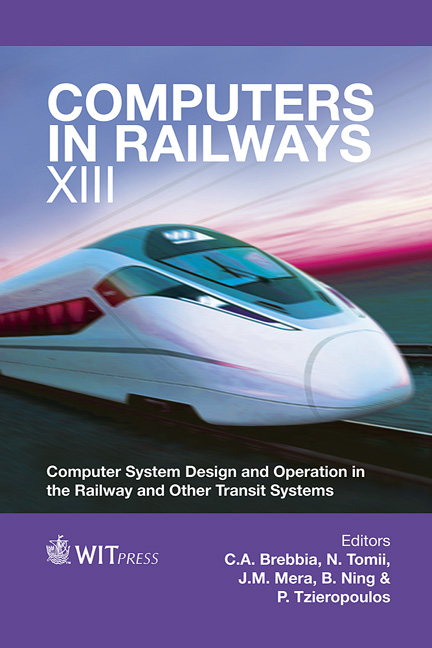Optimal Deployment Of Energy Storage Systems In A DC-electrified Railway System
Price
Free (open access)
Transaction
Volume
127
Pages
12
Page Range
603 - 614
Published
2012
Size
2,785 kb
Paper DOI
10.2495/CR120511
Copyright
WIT Press
Author(s)
A. J. López-López, R. R. Pecharromán, J. A. García-Matos, A. Fernández-Cardador & A. P. Cucala
Abstract
Energy Storage Systems (ESSs) represent one of the main vectors for improving railway electrical systems. Former low reliability rates and life-time are being dramatically improved in recent times due to the intensive research on battery and capacitor technologies. However, little research has been conducted on the optimization of railway system infrastructure by incorporating ESSs. This paper presents a method for designing the best possible deployment of ESSs in a DCelectrified mass rapid transport system line by means of optimization, selecting number and location of ESSs. A detailed model of system load flow and energy storage devices for a given traffic scenario in a general DC railway system has been carried out, resulting in a MINLP optimisation model that minimises total energy consumption. Then, a linearization of load flow equations has been performed in order to get a fast-approximate solution of the system by converting the MINLP problem into a MIP one. This optimization method has been applied to a realistic railway system, yielding reasonable location and number of ESSs in the system. The error due to the approximation has been evaluated by comparing the results of the linear load flow against those of the non-linear load flow. The method has demonstrated to be a powerful tool to decide how many and where to place ESSs in a DC-electrified railway system. Keywords: optimisation, energy storage systems, mass rapid transport systems.
Keywords
optimisation, energy storage systems, mass rapid transport systems





